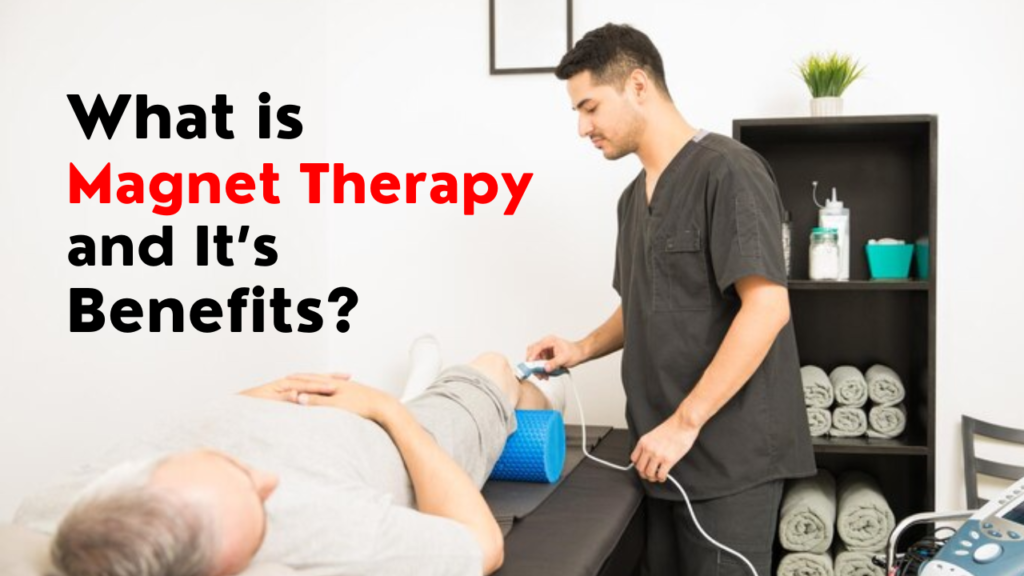Magnet therapy, also known as magnetic therapy or magnotherapy, is a complementary and alternative medicine practice practiced at many Wellness Centres in Prayagraj that involves the use of static magnetic fields for therapeutic purposes. The basic idea behind magnet therapy is that placing magnets on or near the body can positively affect various physiological processes and promote health.
Experts of magnet therapy believe that the magnetic fields produced by magnets can influence the flow of energy, balance the body’s electromagnetic field, and stimulate natural healing processes. It is often used as a non-invasive and drug-free approach to managing pain, reducing inflammation, and improving overall well-being.
There are different forms of magnet therapy, including wearing magnetic jewelry, using magnetic mattress pads, or applying magnets directly to specific areas of the body. However, the scientific evidence supporting the effectiveness of magnet therapy is limited and inconclusive. While some studies suggest potential benefits for certain conditions, more rigorous research is needed to establish its efficacy and mechanisms of action.
Types of Magnets used in Magnet Therapy
In magnet therapy, various types of magnets are used by some of the best Ayurveda Wellness Centres in Prayagraj for potential therapeutic benefits. Common types include static magnets, electromagnets, and magnetized water. Static magnets, often found in jewelry or mattress pads, are believed to influence energy flow. Electromagnets involve the application of a controlled magnetic field using an electric current. Magnetized water is water exposed to magnetic fields, thought to carry potential health benefits. While these are commonly used, it’s essential to note that scientific evidence supporting their efficacy in magnet therapy is limited and inconclusive.
Benefits of Magnet Therapy
While there is ongoing research and debate about the efficacy of magnet therapy, some proponents claim that it may offer certain benefits. It’s important to note that scientific evidence supporting these claims is often limited, and individual responses to magnet therapy can vary. Here are five potential benefits that proponents associate with magnet therapy:
- Pain Relief: Magnet therapy is often used to alleviate pain, especially in conditions like arthritis, muscle soreness, and joint pain. Some believe that the application of magnets may influence the perception of pain and contribute to pain management.
- Improved Circulation: Experts suggest that magnets could help improve blood circulation by influencing the flow of blood and oxygen to tissues. Enhanced circulation is thought to promote healing and reduce inflammation.
- Reduced Inflammation: Magnetic therapy is believed by some to have anti-inflammatory effects. The idea is that the magnets may help modulate the body’s inflammatory response, potentially providing relief for conditions associated with inflammation.
- Enhanced Sleep: Magnet therapy is sometimes used to improve sleep quality. Experts of the Pain management centre in Prayagraj claims that magnets may have a calming effect on the body’s energy field, helping to promote relaxation and better sleep.
- Stress Reduction: Some individuals use magnet therapy as a relaxation technique to reduce stress and anxiety. The belief is that the magnets can influence the body’s energy flow, promoting a sense of balance and well-being.
Conclude
Magnet Therapy, though promoted for potential benefits like pain relief and stress reduction, lacks robust scientific backing. Claims of improved circulation and overall well-being are yet to be conclusively proven. While some individuals report positive experiences, it’s crucial to approach magnet therapy with caution. Before incorporating it into your health regimen, consulting with a healthcare professional is advisable to ensure safety and appropriateness. Further research is needed to establish the true efficacy of magnet therapy in promoting holistic well-being.
